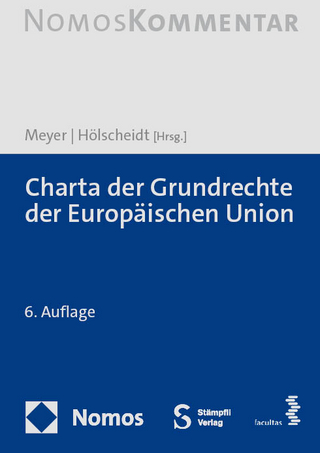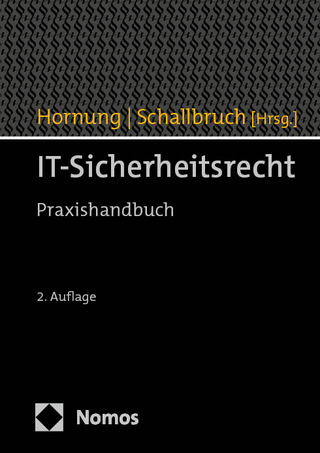
The Conceptualization of Equality and Non-discrimination as Legal Standards
Martinus Nijhoff (Verlag)
978-90-04-53785-9 (ISBN)
- Noch nicht erschienen (ca. Februar 2025)
- Versandkostenfrei
- Auch auf Rechnung
- Artikel merken
This book provides an in-depth analysis of the central concepts figuring in equality and non-discrimination standards across jurisdictions: formal and substantive equality, direct and indirect discrimination, reasonable accommodation, affirmative action and intersectional discrimination. It explains how different conceptualizations matter and may result in different outcomes in legislation, case law and policies. In doing so it draws on examples from a wide variety of sources, including the European, Inter-American and global human rights systems and the jurisprudence of the apex courts in Canada, India, South Africa and the US. This study also shows how the conceptualization of equality has been moving overall from formal to more substantive equality.
Titia Loenen is Professor of Human Rights and Diversity at Leiden University. She holds degrees in history and law. She has published extensively on human rights, equality theory, international, European and Dutch non-discrimination law
Acknowledgements
Abbreviations
1 Introduction
1.1 Goal and Approach of the Book
1.2 Methods
1.3 Terminology
1.4 Outline of the Subsequent Chapters
2 Historical Background and General Characterisation of Equality as a Legal Concept
2.1 Introduction
2.2 Historical Development of Equality as a Legal Concept
2.3 Equality as a Legal Standard – Conceptual Scope: What Equality?
2.4 Equality Standards, Separation of Powers Principles and the Role of Courts
2.5 Horizontalization of Equality Standards
2.6 Equality and ‘Dominant Standards’ in Law and Society – the Limits of Law in Addressing Systemic Discrimination
2.7 Concluding Remarks
3 Formal and Substantive Equality
3.1 Introduction
3.2 Formal Equality: Like Cases must be Treated Alike.
3.3 Difficulties and Limitations of a Formal Equality Approach
3.4 Substantive Equality: Like Cases must be Treated Alike and Unalike Cases must be treated Unalike in Proportion to their Unalikeness.
3.5 Difficulties and Limitations of a Substantive Equality Approach
3.6 Concluding Remarks
4 Discrimination – General Features
4.1 Introduction
4.2 Non-Discrimination as a Specific Articulation of Equality
4.3 Identifying Sensitive or Protected Grounds
4.4 Discrimination Review – Justifying Difference in Treatment on the Basis of a Protected Ground
4.5 Difficulties and Dilemmas of Ground-Depending Differentiated Review
4.6 Concluding Remarks
5 Indirect Discrimination
5.1 Introduction
5.2 Development and General Features of Indirect Discrimination
5.3 Potential Reach of the Concept of Indirect Discrimination – Addressing Structural and Systemic Discrimination
5.4 Difficulties and Dilemmas of Indirect Discrimination Review
5.5 Inherent Limitations of the Concept of Indirect Discrimination in Addressing Structural Disadvantage and Systemic Discrimination
5.6 Concluding Remarks
6 Lack of (Reasonable) Accommodation as a Modality of Discrimination
6.1 Introduction
6.2 Grounding (Reasonable) Accommodation: Treating Unalike Cases Unalike in Accordance with their Unalikeness
6.3 Lack of Accommodation as a Form of Indirect Discrimination
6.4 Lack of Accommodation as a General, sui generis Modality of Discrimination
6.5 Lack of Accommodation as a Particular, sui generis Modality of Non-Discrimination: the CRPD-Model
6.6 Difficulties and Dilemmas of Applying the Concept of (Reasonable) Accommodation
6.7 Concluding Remarks
7 Positive Discrimination or Positive Action
7.1 Introduction
7.2 General Features
7.3 Legitimacy, Instrumentality and Legality
7.4 Positive Discrimination or Positive Action Review
7.5 Difficulties and Dilemmas of Positive Discrimination or Positive Action Review
7.6 Concluding Remarks
8 Intersectional Discrimination
8.1 Introduction
8.2 General Features
8.3 Intersectional Discrimination Review
8.4 Concluding Remarks
9 Concluding Reflections
9.1 Introduction
9.2 The Increasing Reach of Equality as a Legal Standard – Its Interconnecting Function
9.3 The Central Role of Judicial Bodies
9.4 From a (More) Formal towards a (More) Substantive Approach
9.5 Increasing Complexity – an Ongoing Process
Bibliography
Overview Case Law
Index
| Erscheint lt. Verlag | 27.2.2025 |
|---|---|
| Reihe/Serie | Nijhoff Law Specials ; 111 |
| Sprache | englisch |
| Maße | 155 x 235 mm |
| Gewicht | 1 g |
| Themenwelt | Recht / Steuern ► EU / Internationales Recht |
| Recht / Steuern ► Öffentliches Recht ► Völkerrecht | |
| ISBN-10 | 90-04-53785-6 / 9004537856 |
| ISBN-13 | 978-90-04-53785-9 / 9789004537859 |
| Zustand | Neuware |
| Haben Sie eine Frage zum Produkt? |
aus dem Bereich


